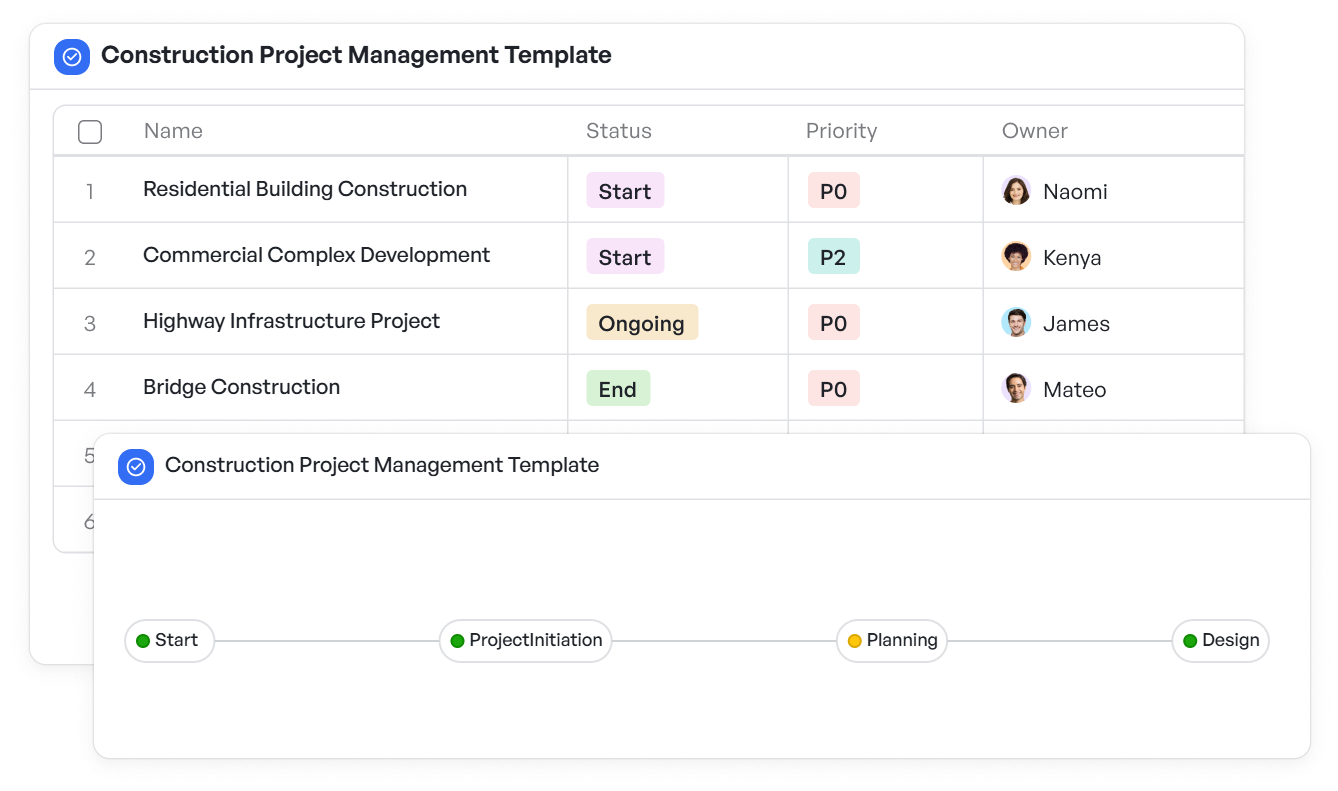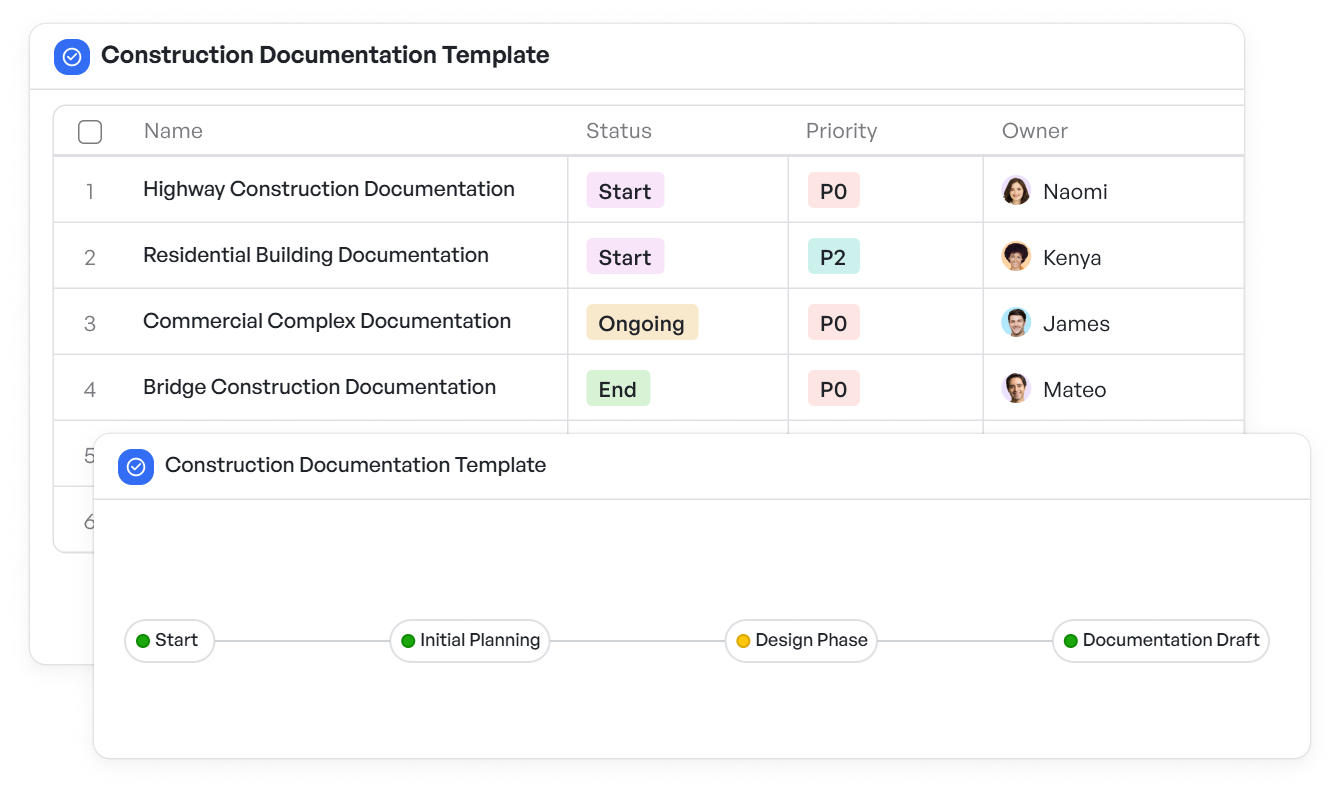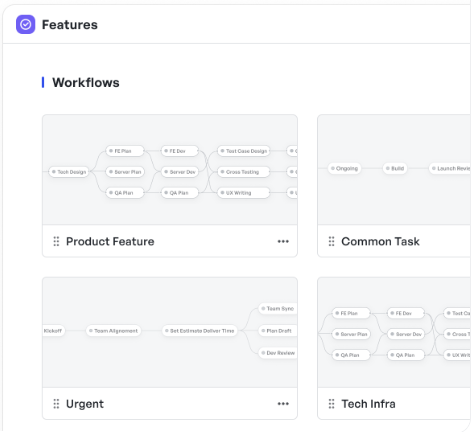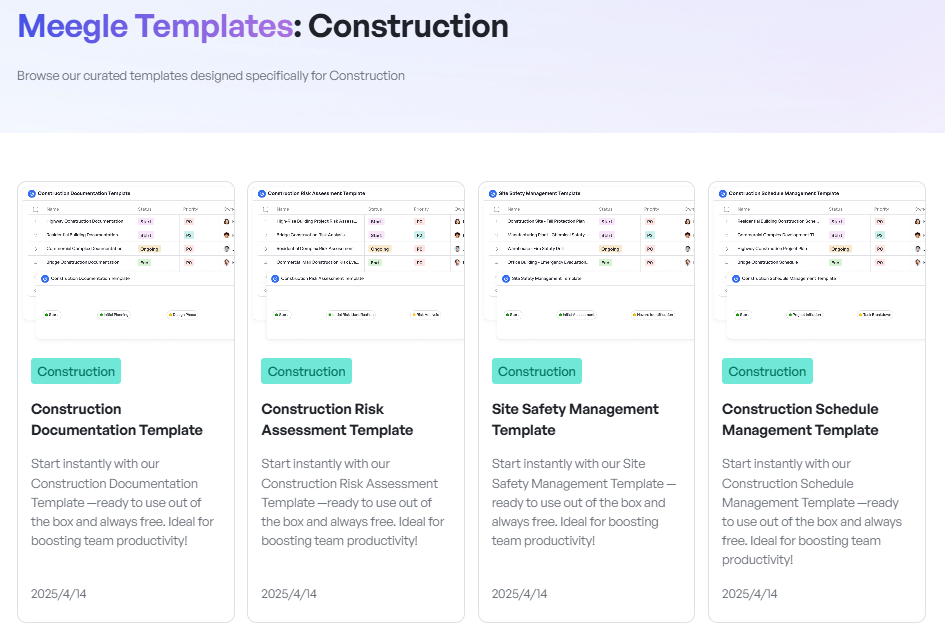How To Implement Agile Modeling In Construction: Streamlining Construction Project Management

Construction projects involve multiple teams, phases, and regulations, making effective management essential to avoid costly delays. Agile modeling provides a way to visualize and iteratively improve workflows, enabling construction firms to handle complexity with clarity.
Agile modeling, an integral part of the Agile methodology, provides a structured approach to visualize and adapt construction project workflows, helping construction teams achieve faster delivery of high-quality results.
This article discusses how mid-market and enterprise construction companies can apply Agile modeling to manage schedules, coordinate stakeholders, and deliver projects on time.
Why Agile Modeling in Construction Works for Project Success
Construction often faces changing site conditions, evolving designs, and tight regulatory demands. Traditional rigid project plans can hinder responsiveness, causing costly overruns.
Agile modeling breaks projects into visual workflows that evolve through continuous feedback. This flexibility helps teams adjust plans quickly while maintaining visibility into dependencies, resource allocation, and compliance.
5 Key Benefits of Agile Modeling in Construction
Agile modeling in construction offers significant advantages, enabling firms to streamline their project workflows and adapt to challenges more efficiently. Below are the key benefits:
Visualizing Complex Workflows
Agile modeling in construction enables teams to clearly map out various project phases, including design, permitting, procurement, and construction.
By using tools such as the construction project management template and construction schedule management template, teams can visualize the entire project flow and ensure all phases are well-coordinated.
 Clear project phase mapping with the construction project management template
Clear project phase mapping with the construction project management templateEnhancing Stakeholder Communication
Agile modeling facilitates seamless communication between key stakeholders, such as contractors, architects, engineers, and clients.
With templates like the construction documentation template and construction change order template, all parties stay aligned and informed, ensuring smooth project progression and addressing any concerns early on.
 Improve alignment and transparency among all project stakeholders with a construction documentation template
Improve alignment and transparency among all project stakeholders with a construction documentation templateAdapting to Site Changes Quickly
One of the greatest advantages of Agile modeling in construction is its ability to adapt to site changes. Whether responding to unexpected site conditions or incorporating design revisions, Agile modeling allows for quick updates.
Construction risk assessment tools are especially useful in identifying and managing risks, ensuring teams can make adjustments in real-time.
Reducing Risks
Agile modeling helps teams identify potential risks early, such as scheduling conflicts or resource shortages. Visualizing the project’s workflow makes it easier to spot these issues in advance, allowing for quick action.
The construction resource allocation assists in managing and optimizing resources to avoid delays and bottlenecks.
 Workflow visualization in Meegle
Workflow visualization in MeegleTracking Compliance and Inspections
Ensuring compliance with safety regulations and permits is crucial in construction. Agile modeling makes it easier to integrate these elements into the project’s workflow.
Templates like the construction compliance checklist template and site Safety management template help teams track safety inspections, regulatory approvals, and other compliance requirements, ensuring all necessary checks are in place.
 Ensure timely completion by tracking compliance and safety inspections seamlessly
Ensure timely completion by tracking compliance and safety inspections seamlesslyHow to Start Agile Modeling in Construction
To successfully implement Agile modeling in Construction, follow these five structured steps:
1. Visualize Current Construction Processes
Begin by capturing the key construction phases, workflows, and handoffs using templates such as the Construction Project Management Template.
This will help create a visual map of your processes, making it easier to identify dependencies and streamline task coordination.
2. Break Projects into Manageable Features
Divide the project into smaller, manageable feature sets. For example, define clear deliverables such as foundation completion, framing, and electrical installation.
Use the construction schedule management template to track these deliverables, ensuring that each phase aligns with the overall project timeline.
 Break down projects into manageable features, and ensure each deliverable aligns with the project timeline
Break down projects into manageable features, and ensure each deliverable aligns with the project timeline3. Establish Continuous Feedback Loops
In agile modeling in construction, regular updates and feedback are essential for adapting to project changes. Set up periodic model updates that reflect progress, delays, or changes.
The construction risk assessment template can be employed to identify potential risks early and make adjustments accordingly.
 Early risk identification enables timely adjustments, keeping the project aligned and addressing issues promptly
Early risk identification enables timely adjustments, keeping the project aligned and addressing issues promptly4. Integrate Compliance and Inspection Checkpoints
Construction projects are highly regulated, so it’s vital to integrate compliance checkpoints into the workflow.
Use the construction compliance checklist template to track inspections, approvals, and safety audits, ensuring that each phase meets the necessary standards.
 Integrating compliance checkpoints ensures each phase meets regulatory standards
Integrating compliance checkpoints ensures each phase meets regulatory standards5. Utilize Collaborative Tools for Seamless Communication
Agile modeling in construction thrives when teams collaborate efficiently. Use collaborative tools that allow all stakeholders to access updated workflows in real time.
The site safety management template ensures safety guidelines are followed while keeping the communication flow intact.
 Collaborative tools ensure real-time workflow access and efficient communication while maintaining safety guidelines
Collaborative tools ensure real-time workflow access and efficient communication while maintaining safety guidelinesSuggested Read:👉Best Project Management Software for Construction
Agile Modeling in Construction: Key Visual Workflow Templates for Success
Useful templates for construction teams include:
- Project management template
- Permit workflow template
- Site safety management template
- Change order template
 Templates available for the construction industry by Meegle
Templates available for the construction industry by MeegleMeegle’s templates for construction help streamline workflows and enhance project management efficiency.
These templates not only guide teams through key processes but also allow for continuous refinement and adjustments throughout the project lifecycle.
Deliver Construction Projects On Time with Better Coordination
Agile modeling helps construction firms manage complexity through clear visual workflows and continuous collaboration. This approach reduces delays, improves resource use, and ensures compliance, vital for mid-market and enterprise projects.
Build your workflow today!
The world’s #1 visualized project management tool
Powered by the next gen visual workflow engineRead More
Check All BlogsStart creating impactful work today



